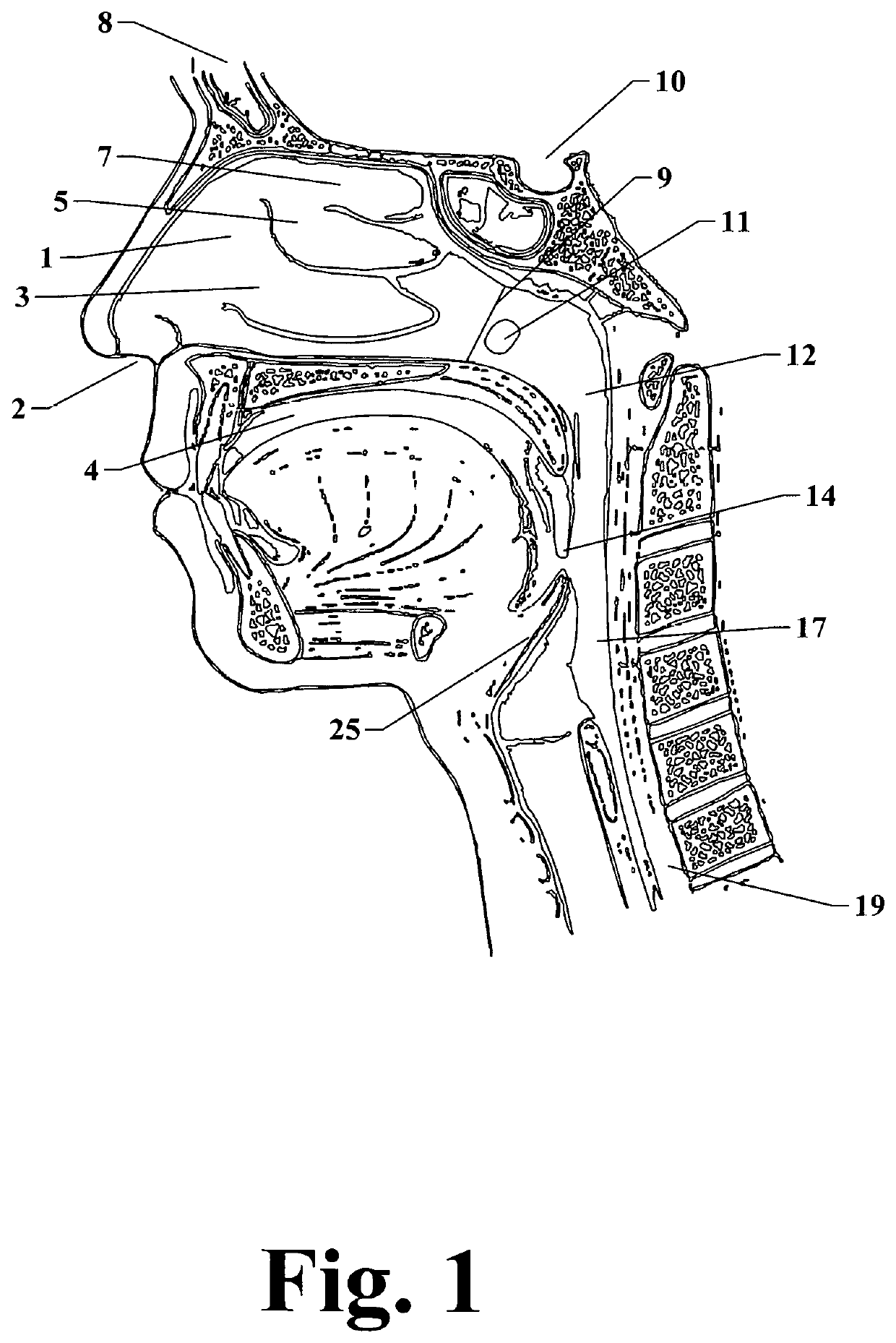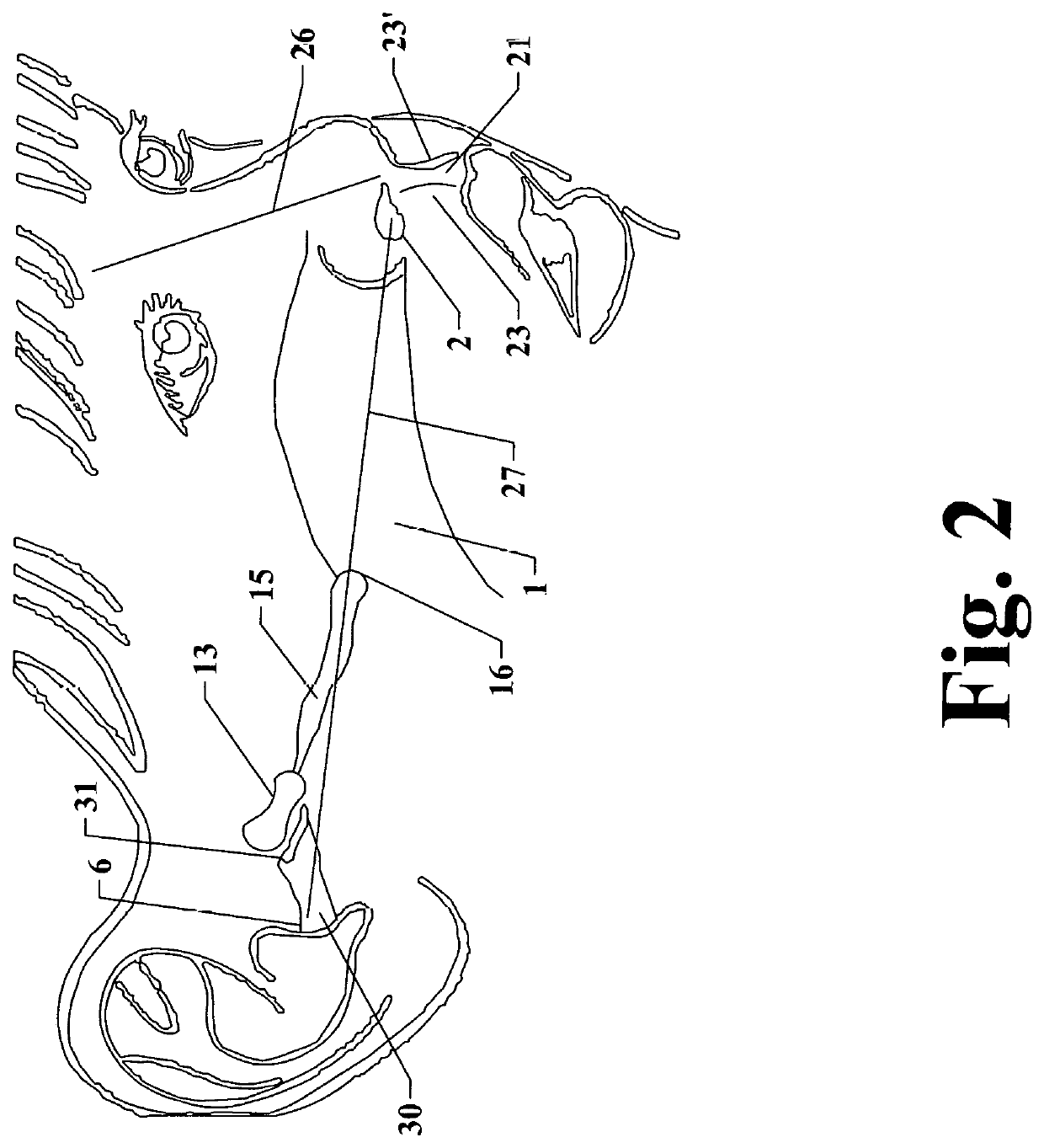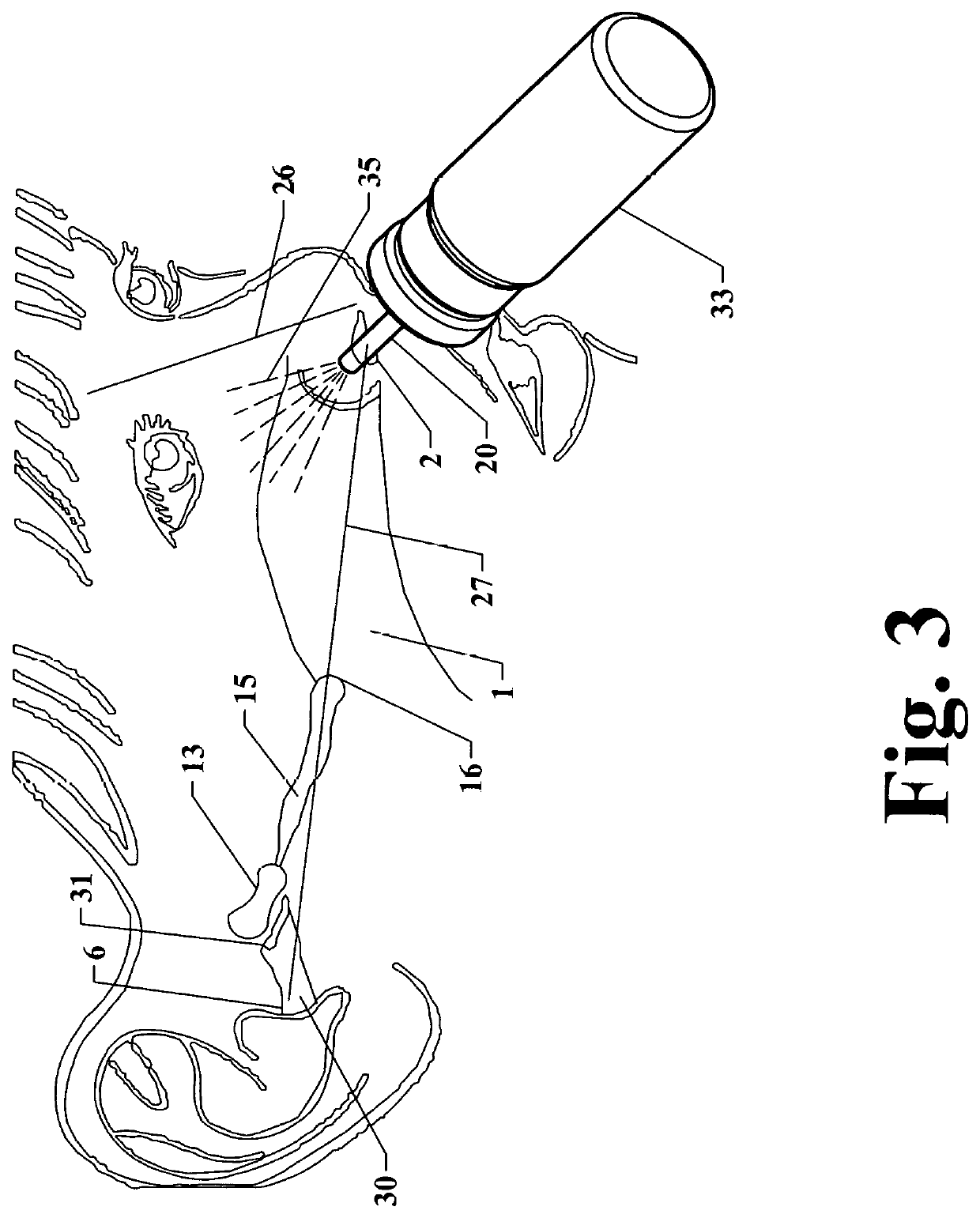Method for enhancing eustachian tube patency and treatment of otitis media
a technology of eustachian tubes and patency, applied in the direction of ear treatment, other medical devices, inhalators, etc., can solve the problems of not having a mechanism or guidance to direct such streams towards the eustachian tube stoma, achieving consistent formula ratios, and greater difficulty in meeting regulatory requirements. , to achieve the effect of improving pressure equalization, enhancing the function of the eustachian tub
- Summary
- Abstract
- Description
- Claims
- Application Information
AI Technical Summary
Benefits of technology
Problems solved by technology
Method used
Image
Examples
Embodiment Construction
[0038]FIG. 1 is a detailed lateral internal partial view of a human head illustrating internal structures of the oral, nasal, pharyngeal and tracheal areas therein.
[0039]FIG. 2. is a lateral view of a child's face illustrating internal relationships of the nostril, nasal cavity, nasal pharynx and eustachian tube.
[0040]FIG. 3 is the lateral view of the child's face shown in FIG. 2 with a prior art nasal delivery device in place and activated.
[0041]FIG. 4 is a lateral view of the child's face shown in FIG. 2 with an eustachian tube targeting nasal administration device which can be utilized in practicing the present method in place and activated.
[0042]FIG. 5 is a lateral view of the child's face shown in FIG. 2 with an alternate embodiment of an eustachian tube targeting nasal administration device which can be utilized in practicing the present method in place and activated.
[0043]FIG. 6 illustrates a side view of an eustachian tube targeting administration device which can be utilize...
PUM
 Login to View More
Login to View More Abstract
Description
Claims
Application Information
 Login to View More
Login to View More - R&D
- Intellectual Property
- Life Sciences
- Materials
- Tech Scout
- Unparalleled Data Quality
- Higher Quality Content
- 60% Fewer Hallucinations
Browse by: Latest US Patents, China's latest patents, Technical Efficacy Thesaurus, Application Domain, Technology Topic, Popular Technical Reports.
© 2025 PatSnap. All rights reserved.Legal|Privacy policy|Modern Slavery Act Transparency Statement|Sitemap|About US| Contact US: help@patsnap.com



